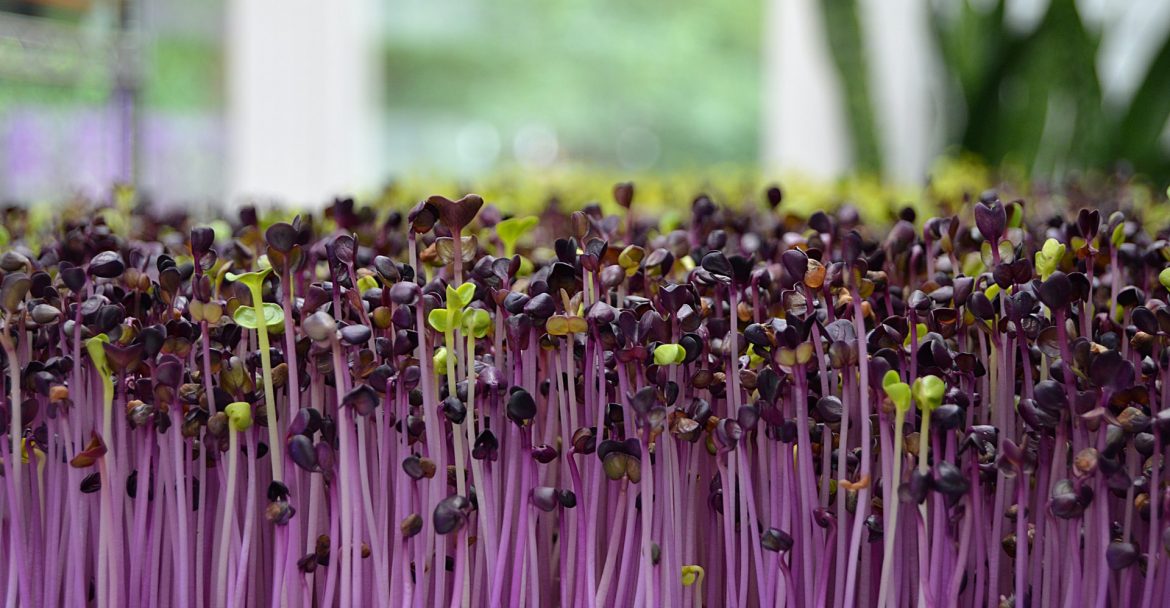Your microgreens will do much better if you balance the pH of the water you use to water them. Most city tap water has a ph of 7 to 8 which is too alkaline. You will be more successful if you adjust the pH of your water to a slightly acidic pH closer to 6. Make careful note of exact quantities you use to balance a gallon of water. Once you have done this, you will not need the litmus strips again.
1 – Fill a gallon container with water. Using filtered water is ideal, as it will remove some of the chlorine in your tap water.
2 – Dip a litmus strip in the water and remove. Wait for 30 seconds and compare the color of the litmus strip to the key on the vial to determine the pH of your tap water. It helps to have good lighting.
3 – Your target pH is 6, but a little above or below 6 is acceptable (5.5 to 6.6).
IF: your pH is higher than 6 use a mild household acid to bring it down. We recommend strained lemon juice. Vinegar can also be used but is not our first choice. Add 1/2 teaspoon of lemon juice to the gallon of water and stir thoroughly. Re-measure your pH (see step 2). If your pH is still higher than 6.5, add more lemon juice and re-measure until your pH is approximately 6.
IF: your pH is substantially lower than 6 (this should be very rare), use a mild household base to bring it up. This can be tough as there aren’t many great options to do this. Try using part of a crushed antacid tablet. You could also experiment with baking powder but only if very small amounts are needed. Measure the amount you use to bring up the pH to 6. The best option for raising the pH of your water is to use a commercial pH adjuster. Check www.trueleafmarket.com or a local garden supply center for options.
4 – Note the amount you used to adjust a gallon of water. Use that formula going forward to adjust the pH of water for your microgreens. Use leftover litmus strips to do an occasional test to spot check accuracy.


